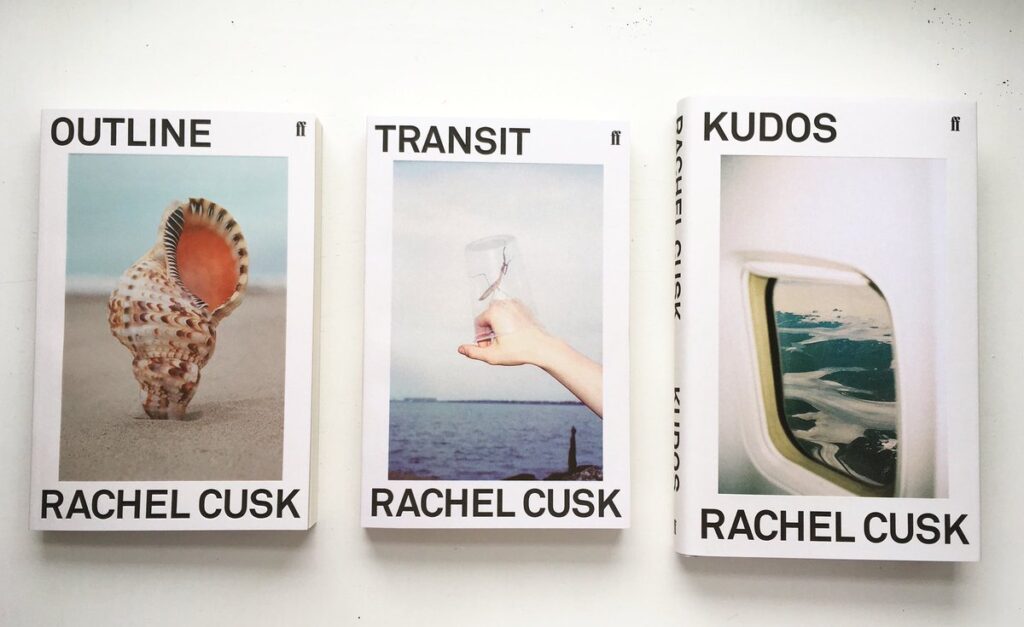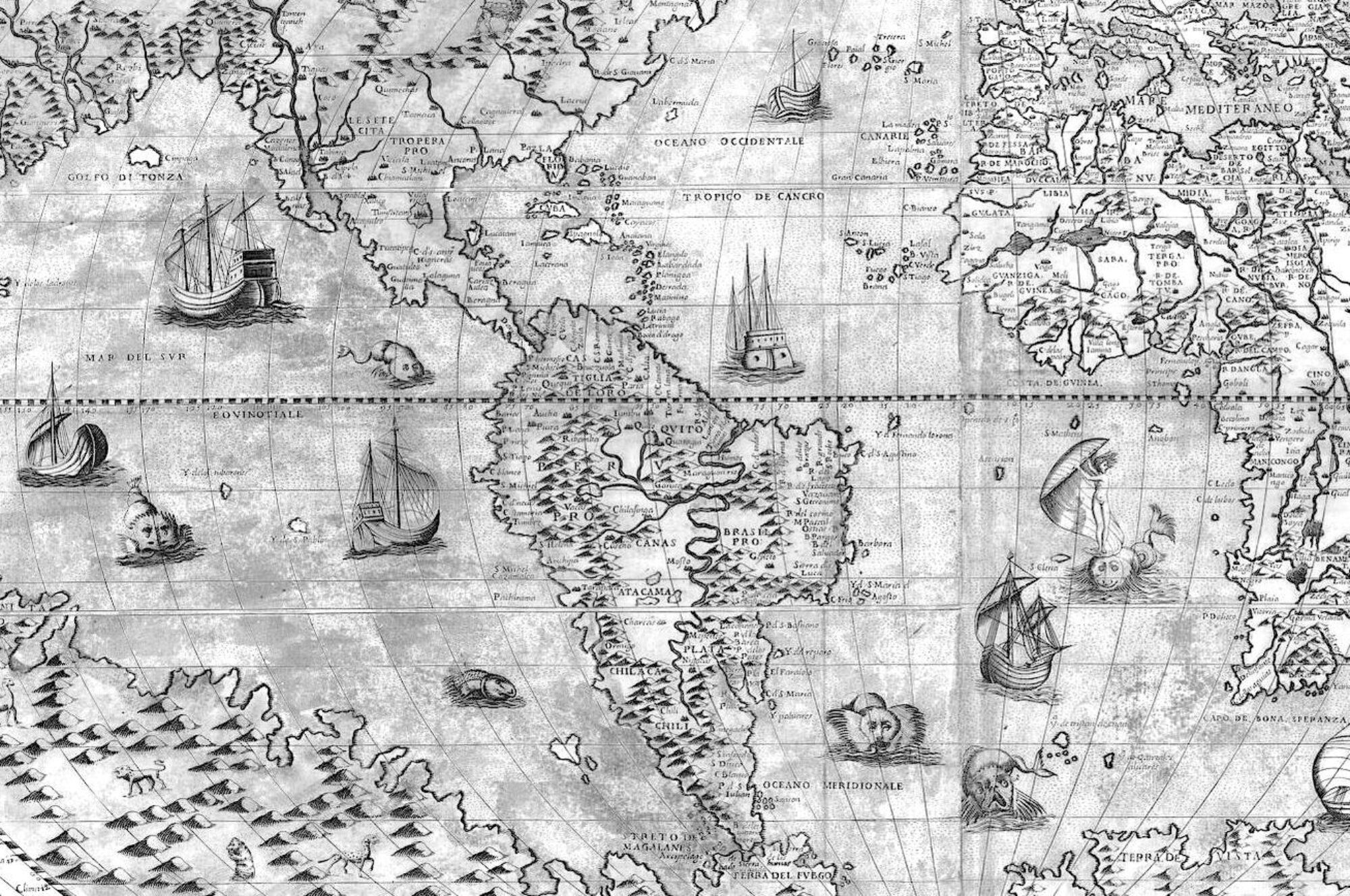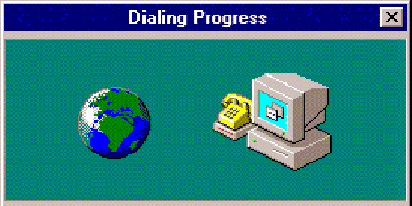
Rachel Cusk has become my 2019 obsession, by which I mean that her books have been the irresistible ones, the ones I’m compelled to buy despite the piles of unread ones in the house. It’s because of the precision of her writing, her descriptions of individuals, landscapes, rooms, and the atmospheres in the rooms, that are concise and vivid and simultaneously unusual and spot-on. The way emotion is intensely present but not overstated on the page. Her sense of humor, grim and dry, and the way she takes on difficult subjects without looking away. The way she dives straight into the essential question, problem, point of fracture or heartbreak.
Her so-called “Outline” or “Faye” trilogy, feels so much of this time, though I haven’t entirely figured out why. I don’t just mean references to Brexit or sideways commentary on the state of the publishing industry, though those kinds of things do make an appearance. I mean the narrative experiment going on, in terms of both the position Cusk takes as an author and Faye takes as a narrator.
Author v. narrator v. narrative
Cusk has essentially said that she had to step away from writing as herself after being viciously, personally attacked by the press, and some readers, following the publication of her memoirs on becoming a mother (A Life’s Work, which is stunning and hilarious and brilliant) and her divorce (Aftermath, which I haven’t read).
The author has put aside the construct of a plot, perhaps distrusting whatever use an invented storyline can be to our lives, and instead seeks to dig into the stories people tell each other or tell about themselves. The form is experimental in that the narrator, Faye, is a writer who hides behind the retelling of other people’s stories. In the first book, she travels to Athens to teach a writing workshop; she buys and renovates an apartment in London in the second; and attends a writer’s conference in Portugal in the third. We learn that she is divorced, that she has two children. This is the slender framework of the trilogy. The meat of the books are the stories of the people she meets – strangers on airplanes, her writing students, her hairdresser, old friends, journalists who interview her. She retells and reshapes their accounts and confessions. Their stories are shards of a mirror that refract and reflect each other, and Faye in a more subtle way. There are many possible themes, or maybe these are better phrased as questions: What happens after you let go of the story of the life you imagined for yourself? What do parents do to children? What do men do to women? What does suffering bring? What does it create? What is static and what is changeable about the self? What generates the creative act?
It’s significant that Faye is a writer only insofar as that renders her capable of such vivid and at times scathing portraits. It seems like she’s erasing herself in favor of painting portraits of others, but she’s retelling their stories in her own words. She’s not repeating them verbatim.
Conversations with strangers on a plane occur early in two of the books, which sets the tone for the project. Why does that happen, people pouring their hearts out to strangers on a plane? Because it is a temporary space, because there is an intimacy borne of the close physical proximity, because the stranger will never be seen again, because there’s always a sense of mortality and powerlessness about being on a plane. There are other types of scenarios that inspire people to confide: the hairstylist’s chair (but in this case it’s the hairstylist who discloses), a gathering of writers, where there is almost a one-upmanship to prove who is the most damaged (and perhaps, then the more interesting writer?), a dinner with an old friend not seen in years, a writing workshop where students are willing to make themselves vulnerable. Sometimes the revelations by the speaker are unconscious, and only a careful listener (or reader) would pick up on the hypocrisy or self-deceptions that emerge from contradictory assertions.
But other times, the radically honest confidences are not in the context of any special relationship or setting, they just come. In the world of the trilogy, Faye is able to conjure this sort of atmosphere with, apparently, anyone she talks to. Faye usually omits the questions that lead to these radical disclosures from friends, and at times, near strangers. It’s fiction in that sense, a world more interesting than the one we inhabit. We aren’t usually privy to the questions she asks that makes the other person reveal the unutterable secret that holds their marriage together, the time they beat their children’s beloved dog, the assault by a stranger that made them unable to create. It’s an intense and double-edged fantasy, and certainly the fantasy of a writer.
I think Cusk, in her memoirs, and also in the character of Faye, takes on a hapless persona, a character who is always uncomfortable, but not afraid to express that discomfort, as if everyone should feel that way. She’s not afraid to be a bummer and I found this quality enchanting, the unapologetic quality of it. London is hostile, but Athens is too bright, the sunshine harsh and disorienting. For Faye, in the first two books, this discomfort comes from heartbreak, but heartbreak that goes deeper than the romantic kind. She, and her children, are survivors of the rending of their domestic life, the obliteration of certainties in the life the family had built together. In the first two books she is stumbling in the rubble, still obligated to tend to the needs of students, to men wanting an audience, to malicious neighbors, to her children, in this state of aftershock.
Funny
The grim tone is a foil to the funny scenes and could perhaps lead one to miss the humor. When Faye’s plane “neighbor, ” who has twice taken her out on his boat for a swim in the Greek heat, and who, with each of his monologues has revealed the straight-out lies he told about his two wives and himself, makes a pass at Faye, the action is startling and somehow hilarious. Maybe because we’re jolted to attention with live action actually taking place, as opposed to happening via a second- or third-hand account. But it’s also the description of the man’s advance itself, where she depicts him as moving like some kind of prehistoric caveman creature.
There’s also the scene in Transit, back in Britain, set in a posh country house, where a glamorous set of guests and their children have gathered, their complex troubles attendant, too. Faye’s gourmand cousin, who is peevishly trying to develop the children’s picky palates, sets down plates of tiny roasted fowl before all, and the children scream and weep at the dead little animals, candles blazing all around them, illuminating and flushing their faces like a painting. It’s a perverse and funny kind of climax near the very end of the book before Faye slips away from the mess the next morning.
Reception
I haven’t talked to anyone in person who has read the trilogy, though I’m frequently praising Cusk to reader friends, so maybe my proselytizing will lead to a chance to discuss it. In the meantime, I’ve read all of the reviews and profiles of Cusk online. The critical consensus seems to be that Kudos, the last book, is the culmination of the three. My theory is that this is because it’s the one that deals most explicitly with the publishing industry and its troubled marketing apparatus, with the fake and tedious aspects of the book fair, with the parrying done by writers at the after-panel dinners. It’s like how film critics love films about film-making and the film industry, the insider’s view of the process makes you feel closer to it.
But I think Faye/Cusk could make anywhere interesting – I remember starting Outline and being dazzled by how she made that familiar ritual of flight takeoff and the safety demonstration seem alien and new. And while it could be argued that Outline, too, is about the writing life (teaching a workshop), this is more the framework than the atmosphere or substance of the book, which are concerned with the sense of separation that comes from traveling, being away from home, taking in others’ pain. Faye is preternaturally sensitive while also standing behind glass. In Transit, the middle book, we see more of Faye because she’s at home. It’s full of a different tension. As she seeks to rebuild her life, most visibly by renovating dilapidated apartment, there’s an underlying anxiety about how quickly anything can be destroyed. Her monstrous downstairs neighbors, for example, befoul her attempts at starting fresh. The novel is full of shattered glass: the glass door at her hairdressers destroyed by a nervous boy slamming the door, the window of Faye’s car, which she has locked in the keys, smashed by her inconsiderate date, who wouldn’t wait to get his stuff. She must stand waiting with the car alarm wailing.
My favorite of the three was Outline, maybe simply because it was my first encounter with Cusk’s writing, but I think also because it so tangibly conveys the feeling of travel: the launch of the journey on the plane, the increasing sense of separation from home life, the intensity that weather, every new face and street corner takes on, because it is new, and because of the knowledge that it is all temporary.

